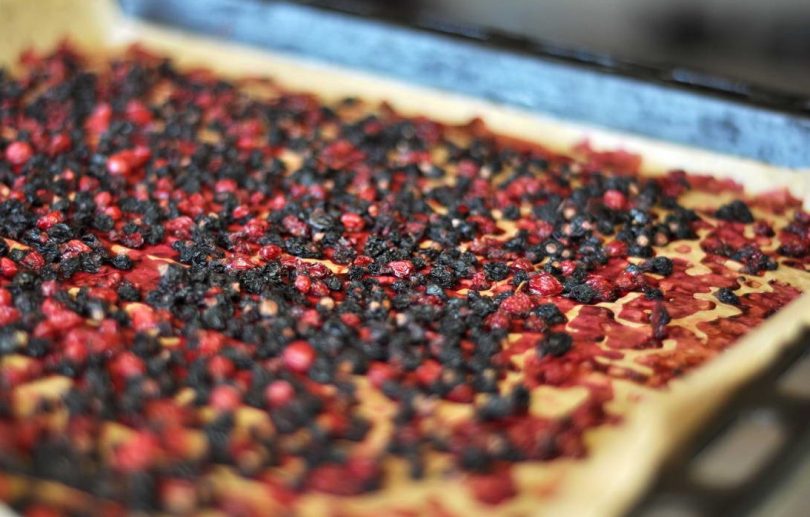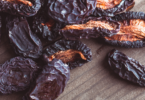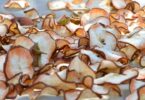Learn how to dehydrate currants at home!
Drying currants is the best way to store this delicious berry so that it can be enjoyed later. Fresh currants have a ripening period of only a few weeks, so they have to be preserved so they can be consumed over time.
Before currants can be dried, however, they have to be prepared properly to ensure the best results.
- The first step is to harvest the berries during a sunny day when they are at their driest since it is harder to store wet berries. Choose only ripe currants, and discard rotten and sick ones.
- Wash and dry the berries, and then leave them out to dry. To absorb moisture, spread out the currants on a soft towel to absorb excess moisture.
Methods for Drying Currants
Here are some of the most common and easy techniques used to dry currants.
Air drying currants
This is the simplest method and the one that preserves the most vitamins in currants. However, it also takes a long time to complete.
- Use wooden trays covered with parchment or tracing paper.
- Spread the currants out on the trays in a thin, even layer.
- Cover the currants with gauze and take the trays out to an open area such as an attic or balcony. Leave them to dry, which can take around two days on average.
- Periodically check the currants to ensure they are drying evenly.
Sun-drying currants
This is the traditional method used to dry currants.
- Line a wooden pallet or tray with tracing or parchment paper.
- Pour currants onto the tray in one layer, making sure they are evenly distributed.
- Place the pallet in a shady spot until some of the moisture has evaporated. Then transfer it to a sunny spot.
- Cover the tray with a thin cotton cloth or gauze to prevent insects from spoiling the currants.
- Drying in the sun takes around two days. At night, bring in the currants and then take them out again the next day.
- Periodically mix the currants to ensure that they dry evenly. Make sure that they are evenly distributed on the surface of the tray.
Drying currants in the oven
This method is the most popular method of drying currants since it is faster compared with other methods.
- Before drying, sort the currants to remove all the damaged and spoiled berries. Then wash them and dry them in the open.
- Place the berries on a tray lined with aluminum foil or two layers of baking parchment. Make sure that they are evenly placed in a single layer.
- Set the oven temperature to 45C (or min temp of your oven) and bake the currants for an hour. Afterward, the berries should be slightly withered.
- Remove the currants and allow them to cool. Then increase the oven temperature to 70C.
- Return the currants to the oven and allow them to dry for another two hours or until the berries are tender.
Microwave drying currants
This method is quick and effective but can only handle a limited number of currants. You can’t dry an entire harvest using this method. However, the end result is dried currants that are tasty and bright.
- Cover the microwave plate with a napkin or cotton cloth. Place one layer of sorted berries on top. Cover them with another piece of cloth or napkin.
- Set the oven to 200 watts. Warm up the currants for five minutes. Then check the berries to see if they are ready.
If necessary, the currants can be dried several more times. In between dryings, stir the currants for thirty seconds.
Drying currants in a dehydrator
This is a device that is specifically designed for drying fruits.
- Set the temperature in the dryer to no more than 50 – 55C (or fruit and berries setting). Higher temperatures will cause the currants to be covered in a crust that will make drying more difficult.
- Sort the currants and then wash them and air dry them. Lay them out evenly in one layer on the dryer tray. Let stay for ten minutes before placing it in the dryer.
- Drying the currants using a food dehydrator will take around 24 hours. Periodically check the berries and then stir them slightly.
SEE ALSO: How to Dehydrate Blackcurrants with a Dehydrator
Checking the Currants
Dried currants should have a burgundy and black color, are wrinkled, and have a peculiar slight smell. These currants are ready to be stored.
During the first stages of drying, the currants will first turn a brownish-burgundy color. After this, they will become dark red. Once the berries turn black and begin to wrinkle, they are ready to be checked for readiness.
When checking the currants, they should be shaken up to ensure that you can check all of them. Remove those that are ready. Larger berries may not yet be ready so they should be dried some more.
Tips for Storing Dried Currants
After drying currants, only ceramic or glass containers should be used for storage. These containers should have lids that allow them to be sealed tightly so that moisture won’t spoil the currants.
If you don’t have these containers handy, do not use iron cans since these will cause the berries to have an iron taste after around a month. Instead, you can use tight-fitting cardboard boxes.
The area where the dried currants are stored should be dry and warm as well as dark. The currants should not be exposed to direct sunlight since, as we already pointed out, sunlight will destroy their trace nutrients and Vitamin C content.
If stored properly at room temperatures, dried currants can last for six to twelve months. They should be stored in the refrigerator if you live in humid and hot climates.
Dried currants that are spoiled will have an off appearance or smell. These should be discarded. If mold appears, the currants are unsafe to eat.





